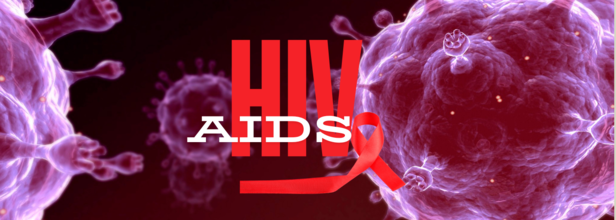- Health Conditions A-Z
- Health & Wellness
- Nutrition
- Fitness
- Health News
- Ayurveda
- Videos
- Medicine A-Z
- Parenting
HIV vs. AIDS: What You Should Know About These Commonly Confused Terms

World Aids Day
The global challenge of HIV/AIDS remains one of the most pressing public health issues today. According to the latest data from UNAIDS, around 38.4 million people worldwide are living with HIV/AIDS, underlining the need for not only medical intervention but also comprehensive awareness, education, and social change. Despite the significant strides made in treatment and prevention, the confusion surrounding the relationship between HIV and AIDS still persists.
Young people have become influential advocates in the fight against HIV/AIDS. Research from UNICEF shows that youth-led initiatives can lower HIV transmission rates by as much as 45% in targeted communities. These young activists utilize digital platforms and peer-to-peer education to dispel myths, promote safe practices, and foster supportive environments for those affected by HIV/AIDS.
Dr Gowri Kulkarni, an expert in Internal Medicine, explains that while the terms HIV and AIDS are often used interchangeably, they are distinctly different. "HIV (Human Immunodeficiency Virus) is a virus that attacks the immune system, whereas AIDS (Acquired Immunodeficiency Syndrome) is a condition that occurs when HIV severely damages the immune system," she clarifies. To understand the implications of these differences, it's important to explore the fundamental distinctions between the two.
1. HIV is a Virus; AIDS is a Syndrome
HIV is the virus responsible for attacking the body’s immune system, specifically targeting CD4 cells, which are crucial for the body’s defense against infections. As HIV progresses, it destroys these cells, weakening the immune system over time. If left untreated, this continuous damage can lead to AIDS.
AIDS, on the other hand, is a syndrome, not a virus. Dr Kulkarni further elaborates that AIDS is a collection of symptoms and illnesses that emerge when the immune system is severely compromised due to prolonged HIV infection. It represents the most advanced stage of HIV, and is characterized by very low CD4 counts or the onset of opportunistic infections like tuberculosis, pneumonia, or certain cancers.
2. Not Everyone with HIV Develops AIDS
A key distinction to remember is that not everyone with HIV will progress to AIDS. Thanks to advancements in medicine, particularly antiretroviral therapy (ART), individuals living with HIV can manage the virus and maintain a healthy immune system for many years, or even decades, without ever developing AIDS. ART works by suppressing the virus to undetectable levels, effectively preventing the damage HIV would otherwise cause to the immune system.
Without treatment, however, HIV progresses through three stages:
- Acute HIV Infection: This stage occurs shortly after transmission and may include symptoms like fever, fatigue, and swollen lymph nodes.
- Chronic HIV Infection: Often asymptomatic or mildly symptomatic, the virus continues to damage the immune system but at a slower rate.
- AIDS: This is the final stage, marked by severe immune damage and the presence of infections that take advantage of the compromised immune defenses.
3. HIV is Transmissible; AIDS is Not
Another key distinction between HIV and AIDS is the way in which they are transmitted. HIV is highly contagious and can be transmitted through the exchange of bodily fluids such as blood, semen, vaginal fluids, and breast milk. It is primarily spread through unprotected sexual contact, sharing needles, or from mother to child during childbirth or breastfeeding.
AIDS, however, is not transmissible. It is not a disease that can be passed from one person to another. Rather, AIDS is the result of untreated, advanced HIV infection and is a direct consequence of the virus’s damage to the immune system.
4. Diagnosis Methods Differ
HIV and AIDS are diagnosed through different methods. HIV is diagnosed through blood tests or oral swabs that detect the presence of the virus or antibodies produced by the immune system in response to the virus. Early detection of HIV is crucial, as it allows for timely intervention and treatment, which can prevent the virus from progressing to AIDS.
AIDS, on the other hand, is diagnosed using more specific criteria. Dr Kulkarni notes that the diagnosis of AIDS is made when the individual’s CD4 cell count falls below 200 cells/mm³, or when opportunistic infections or certain cancers (such as Kaposi's sarcoma or lymphoma) are detected. Diagnosing AIDS involves a more thorough assessment of the individual’s immune function and overall health, as opposed to just the detection of HIV.
5. Treatment Goals Are Different
The treatment goals for HIV and AIDS differ significantly, although both involve antiretroviral therapy (ART). For HIV, the primary treatment goal is to suppress the virus to undetectable levels, thus maintaining a strong immune system and preventing further transmission of the virus. People living with HIV can often live long, healthy lives if they adhere to ART.
For individuals diagnosed with AIDS, the treatment plan becomes more complex. While ART remains an essential part of managing the virus, treatment for AIDS also focuses on addressing the opportunistic infections and secondary health complications associated with severe immune suppression. The goal of treatment for AIDS is not only to manage the HIV virus but also to improve the quality of life and extend survival by treating these secondary health issues.
Role of Community Engagement in Combatting HIV/AIDS
While the medical community has made great strides in managing HIV, the battle to curb its transmission is also a social and cultural issue. Dr Daman Ahuja, a public health expert, highlights that HIV/AIDS awareness and education are vital to reducing transmission rates and supporting those affected by the virus. "Young people, especially, have become key advocates in the fight against HIV/AIDS," says Dr Ahuja. "Research from UNICEF shows that youth-led initiatives can lower HIV transmission rates by as much as 45% in targeted communities."
Additionally, grassroots activism plays a significant role in raising awareness and addressing stigma. As the World Health Organization reports, community-based interventions have been proven to increase HIV testing rates and improve treatment adherence, which are crucial in the fight against the pandemic.
The ultimate goal of organizations like UNAIDS is to eliminate the HIV/AIDS pandemic by 2030. Achieving this requires global collaboration, from medical treatment advancements to public health strategies, education, and advocacy. Dr Kulkarni’s insight underscores the importance of early detection, treatment adherence, and community support in the fight against HIV/AIDS.
Dr Gowri Kulkarni is Head of Medical Operations at MediBuddy and Dr Daman Ahuja, a public health expert and has been associated with Red Ribbon Express Project of NACO between 2007-12.
What To Do When Amoxicillin Gives You Rashes?

Credits: iStock
This year had been a year of flu, fiver, bacterial illness and more. One of the over the counter medicine that many people often buy, or is prescribed, especially for bacterial infections is Amoxicillin.
What Is Amoxicillin?
It is a widely prescribed antibiotic that is used to treat bacterial infections in children and adults. It is part of the penicillin class of medications and it inhibits the growth of bacteria and allows the immune system to efficiently eliminate the infection. It is commonly used to treat bacterial infections affecting the respiratory tract, urinary tract, and skin.
However, about 5 to 10 per cent of children prescribed this may develop skin rashes as a common side effect. A rash can develop in two forms: allergic and non-allergic. A rash from the drug Amoxicillin could last up to a week.
What Kind Of Rashes Are Caused By Amoxicillin?
A Maculopapular rash is a flat rash that occurs like red patches, raised bumps and spreads over the body.
Hives are itchy, raised red or skin-colored welts that can change shape and location.
Erythema Multiforme are more severe, featuring target-like lesions or bull's-eye shapes with central red spot, pale ring, and red outer ring.
Anaphylactic Reaction is a rare but severe allergic reaction that includes symptoms like difficulty in breathing, swelling of the face, lips, or tongue, hives and rapid drop in blood pressure.
Non-Allergic Amoxicillin Rash are flat, red spots that may be slightly raised, but not harmful. These usually appear o the 5th to 7th day after the start of amoxicillin and can appear on the chest, abdomen, back, face, arms, and legs. It may get worse before it starts to get better.
What Signs Should You Look Out For?
Warning signs include rashes within two hours of the first amoxicillin dose, difficulty breathing or swallowing, or very itchy hives.
The allergic reaction is caused by one's immune system reacting to that medication as if it were a foreign invader in the body.
More girls than boys develop these rashes, and in children this is even more common. In fact, the rash by amoxicillin was first noted in 1960s, in children who were being treated with ampicillin, recorded the Journal of Pediatrics.
What Can You Do If You Get Amoxicillin Rashes?
Among treatment, the first step should be to see your physician and immediately stop taking the medication. Drinking water and enough fluids can also help. Your doctor too would prescribe you medications and lotions to soothe your itching.
Hives can also be treated with the over the counter drug Benadryl. However, you must go see your doctor or GP, and not self medicate.
A doctor may treat the rash in various ways, including stopping the medication as the first line of defense. Then the doctor may give oral antihistamines (e.g., cetirizine) for the itch. Some doctors may use topical steroids to help with the itch and redness.
Before visiting your doctor, take photos of your rash, send it to your GP, as if it is contagious. Even after you start the treatment, stay in touch with your healthcare provider for any development.
36% Of Rabies Death Comes From India: This Is What You Should Do After A Dog Bite, Explains Doctor

Credits: iStock
The World Health Organization (WHO), notes that 36% of world's rabies deaths come from India, and a 2024 Lancet study notes that the country accounts for over one-third of global rabies deaths. When we spoke to Dr Aniket Mule, Consultant Internal Medicine at KIMS Hospital, Thane, he said that it is not just dog bites that lead to rabies, but it could happen from any rabies-susceptible animal. The first line of defense after you clear your wound immediately is to get the rabies vaccine. "Rabies vaccination is required for bites or scratches from any rabies-susceptible animal, including cats, monkeys, bats, foxes, and other wild mammals," he pointed out. As the country's apex court ruled and issued directives on stray dogs, focusing on public safety by ordering their removal, global health organizations, including WHO point out that this is not the right way to deal with rabies issue. Comprehensive methods including evidence=based strategies that center on mass dog vaccination is the key to the problem.
However, before this could be implemented, here's what you should know about dog bites and rabies.
What To Do After A Dog Bites Or Scratches You?
Dr Mule points out that even when there are minor scratches, without bleeding, you must get a rabies shot. "Rabies can be contracted through broken skin. Such exposures still require medical evaluation and, in most cases, rabies vaccination."
Read: In An 'Exceptionally Rare' Case, Man Dies Of Rabies After Kidney Transplant
What Should One Do Immediately After Being Bitten Or Scratched?
- Wash the wound immediately for at least 15 minutes with soap and running water
- Apply an antiseptic such as povidone-iodine
- Do not apply home remedies like turmeric, chili or oil
- Seek medical care promptly for rabies vaccination and possible immunoglobin
Dr Mule points out that the rabies vaccine should be started as soon as possible. "Ideally within 24 hours of a bite or scratch. However, even if there is a delay of days or weeks, vaccination should still be started immediately as rabies has a variable incubation period," he says.
After the bite, the immediate medical attention involves rabies post-exposure prophylaxis or PEP, and with a tetanus booster. Some rabies vaccines also use saline water as the diluent to reconstitute the freeze-dried powder before injection.
Read: Australia Issues Advisory Warning Travelers Of Counterfeit Rabies Vaccines Found In India
The temperature of the vaccine matters. "Rabies vaccines are temperature-sensitive and must be stored between 2°C and 8°C. Exposure to heat or freezing can reduce vaccine potency. Poor cold-chain maintenance is a known reason for vaccine failure in rare cases," points out the doctor.
Cases Of Rabies Coming Back After Vaccination Course Has Been Done
Dr Mule points out that in order to avoid such things happening, one must ensure immediate wound washing, timely vaccination, and correct use of Rabies Immunoglobulin or RIG. Rabies can come back if these following things occur:
- Delay in starting vaccination
- Failure to administer Rabies Immunoglobulin (RIG) in severe (Category III) exposures
- Improper wound cleaning
- Incorrect injection site (gluteal region)
- Poor vaccine storage (cold-chain failure)
Dr Mule points out that the vaccine should be given intramuscularly in the deltoid or upper arms for adults, as gluteal or buttock injections could lead to inadequate absorption and reduce effectiveness.
How Many Doses Should One Get?
- For someone not previously vaccinated, the current standard is 4 doses on days 0, 3, 7, and 14 (intramuscular schedule).
- In some government programs or intradermal schedules, 3–4 doses may be advised.
- Previously vaccinated individuals require only 2 booster doses (days 0 and 3).
The exact schedule depends on vaccination history and the protocol followed.
Five Essential Health Tests to Consider This Winter, According To A Doctor

Credits: iStock
Winter in India is often associated with sardio ke laddoo, but also with increasingly sedentary lifestyle, worsening air pollution, all of which leads to more time spending home than to going out, taking a stroll, working out and more. This is why as winter sets in, India also sees a quiet but consistent rise in non communicable diseases, or NCDs, conditions that now account for nearly two thirds of all deaths in the country. Heart disease, diabetes, thyroid disorders, fatty liver disease and arthritis continue to rise across age groups, driven by sedentary lifestyles, dietary excess and delayed diagnosis.
Winter can further aggravate these risks. Physical activity drops, calorie dense foods become routine, sunlight exposure reduces and metabolism changes. Studies and hospital data in India have repeatedly shown that heart attacks and strokes tend to spike during colder months. Blood vessels constrict, blood viscosity increases and cholesterol levels often rise. Blood sugar control also becomes more challenging, while joint pain and stiffness worsen for many.
Dr. Mayanka Lodha Seth, Chief Pathologist at Redcliffe Labs, says the problem is not seasonal food but seasonal neglect. “Traditional winter foods are not harmful on their own. The real risk comes from consuming them without understanding what is happening inside the body,” she explains. “Winter tends to mask symptoms while quietly worsening internal imbalances.”
With India already home to over 100 million people living with diabetes and a similar number estimated to be prediabetic, preventive testing becomes crucial. Doctors recommend five key tests that can offer a clearer picture of health before winter indulgence begins.
Blood Sugar Levels
Diabetes is one of the fastest growing NCDs in India, and a large proportion of cases remain undiagnosed. Winter diets high in sugar and fat can trigger frequent glucose spikes. Testing fasting blood sugar and HbA1c helps identify early risk and prevents long term complications affecting nerves, kidneys and the heart.
Lipid Profile
High cholesterol is a major contributor to cardiovascular disease, which remains India’s leading cause of death. Reduced activity in winter often pushes lipid levels higher. A lipid profile helps assess heart risk and guides dietary and lifestyle moderation before damage sets in.
Liver Function Test
Non alcoholic fatty liver disease is increasingly common in India, even among younger adults. Excess sugar and fat intake during winter can worsen liver fat accumulation. Early liver testing can flag reversible changes before they progress to chronic liver disease.
Thyroid Function Test
Thyroid disorders affect millions in India, especially women, and often go unnoticed. Symptoms like weight gain, fatigue and cold intolerance are frequently brushed off as winter sluggishness. A simple thyroid test helps distinguish seasonal lethargy from hormonal imbalance.
Vitamin D and Vitamin B12 Levels
Vitamin D deficiency is widespread due to limited sun exposure in winter, while Vitamin B12 deficiency remains common because of dietary patterns. Both deficiencies are linked to low immunity, muscle pain, bone weakness and worsening joint discomfort.
Dr. Seth adds, “Preventive diagnostic testing allows people to make informed choices. It helps them enjoy winter foods in moderation without unknowingly worsening an underlying condition.”
As NCD related healthcare costs continue to rise in India, early testing offers both health and financial protection. Winter comfort does not have to come at the cost of long term health. Staying informed may be the most effective preventive step this season.
© 2024 Bennett, Coleman & Company Limited

